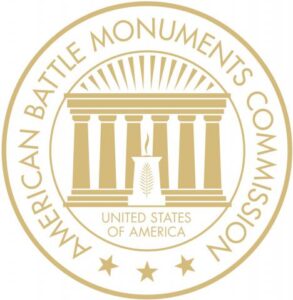Lorraine American Cemetery is located in St. Avold, France. This American Battle Monuments Commission site is the largest World War II cemetery in Europe. It contains the graves of approximately 10,500 service members. Approximately 445 names are also commemorated on its walls of the missing. Most of the service members memorialized there were killed while driving the German forces from the fortress city of Metz, France, toward the Siegfried Line and the Rhine River.
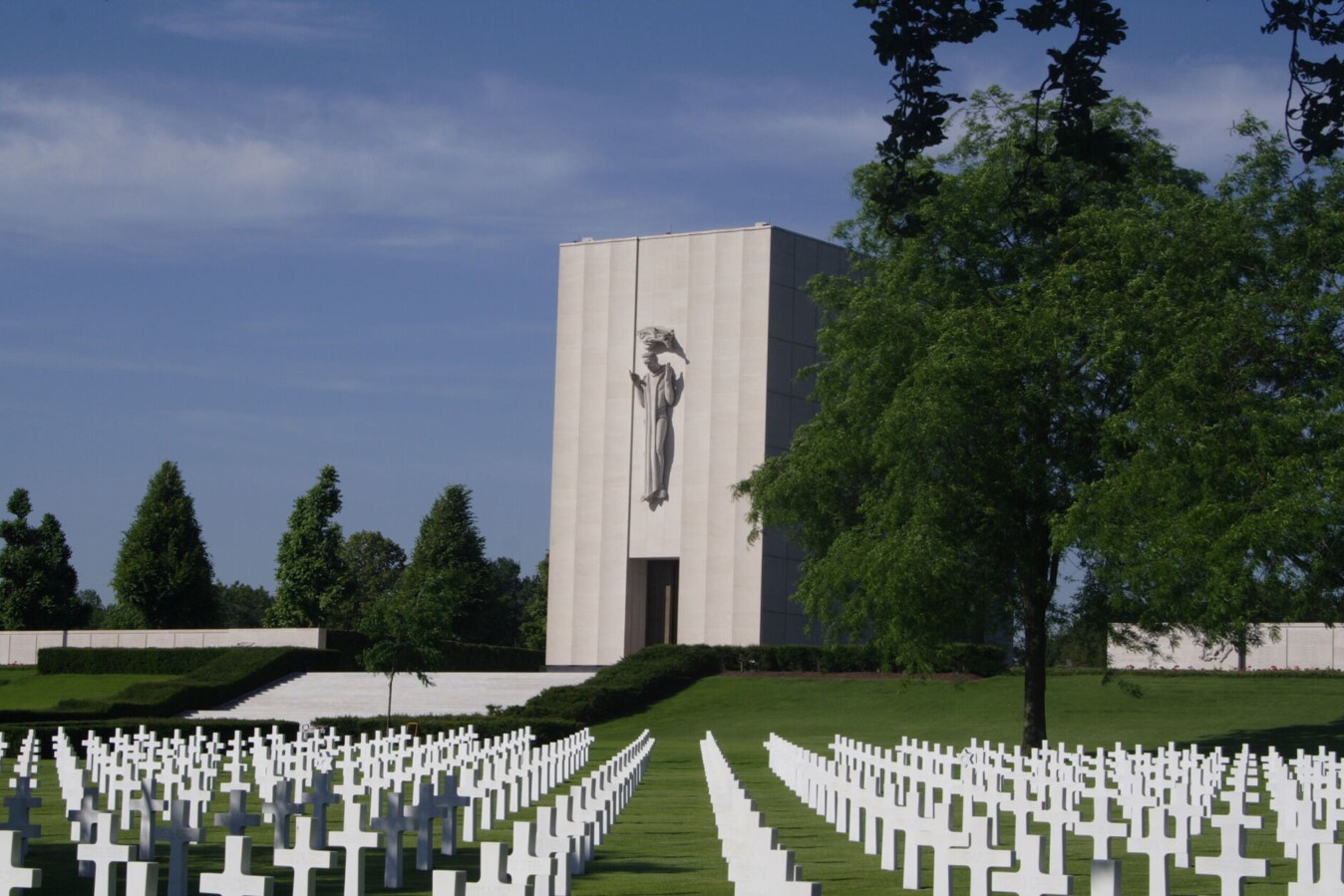
A cemetery built on an old French Army training ground
Lorraine American Cemetery was built on an old French Army training ground maintained by the French 18th Light Cavalry Regiment. This regiment left this area Aug. 21, 1939, to take up position on the German front. On Nov. 27, 1944, the 80th Infantry Division liberated the area that has become the cemetery. On March 16, 1945, a temporary cemetery was placed a half mile to the south. The current location was completed in 1960.
The transition from a military training ground to a cemetery reflects the significant changes in land use that occurred due to the impact of the wars in the region. This historical connection adds depth to the cemetery’s significance, marking it not only as a burial site but also as a location that has witnessed military history over the years.
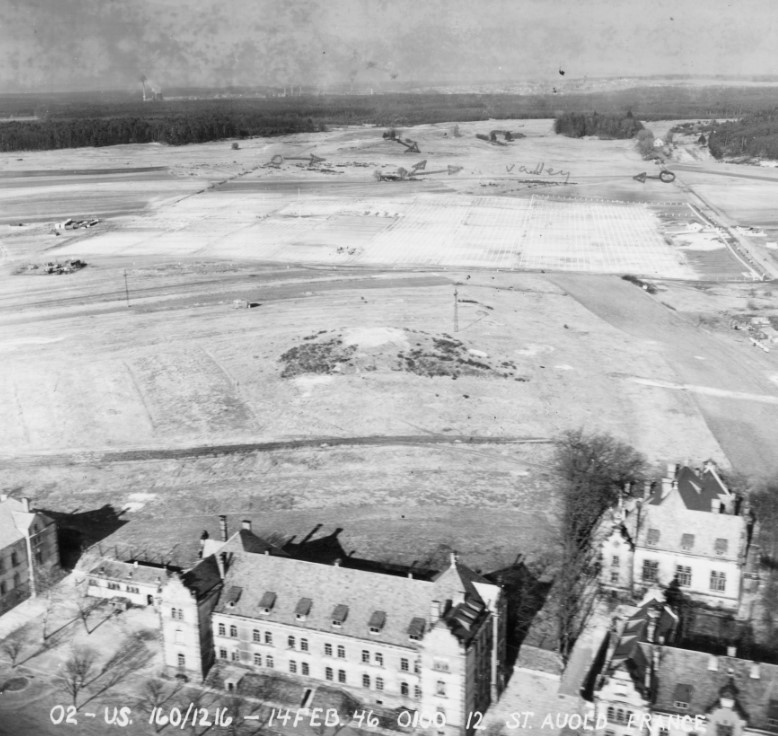
The last U.S. service member killed during World War II in Europe
The last U.S. service member killed in action in the European Theater of Operations during World War II rests in Lorraine American Cemetery. Pfc. Charley Havlat was killed by enemy fire May 7, 1945.
Havlat was born Nov. 4, 1910, in Nebraska of immigrant parents from what is today the Czech Republic. His brothers, Adolph, Rudolph and Lumir, also served in the U.S. Army during the war. Charley and Rudolph served together in the 803rd Tank Destroyer Battalion.
On the morning of May 7, 1945, two reconnaissance platoons were dispatched to identify German positions northeast of Volary, a Czech town. At approximately 8:20 a.m., enemy soldiers opened fire from the woods, injuring several members of the American patrol and killing Havlat. Just minutes later, both American and German units learned of a cease-fire set to take effect at 8:30 a.m., marking the end of the war in Europe. Havlat was killed while aiding in the liberation of his parents’ homeland.
Havlat is buried at Lorraine American Cemetery Plot C, Row 5, Grave 75.
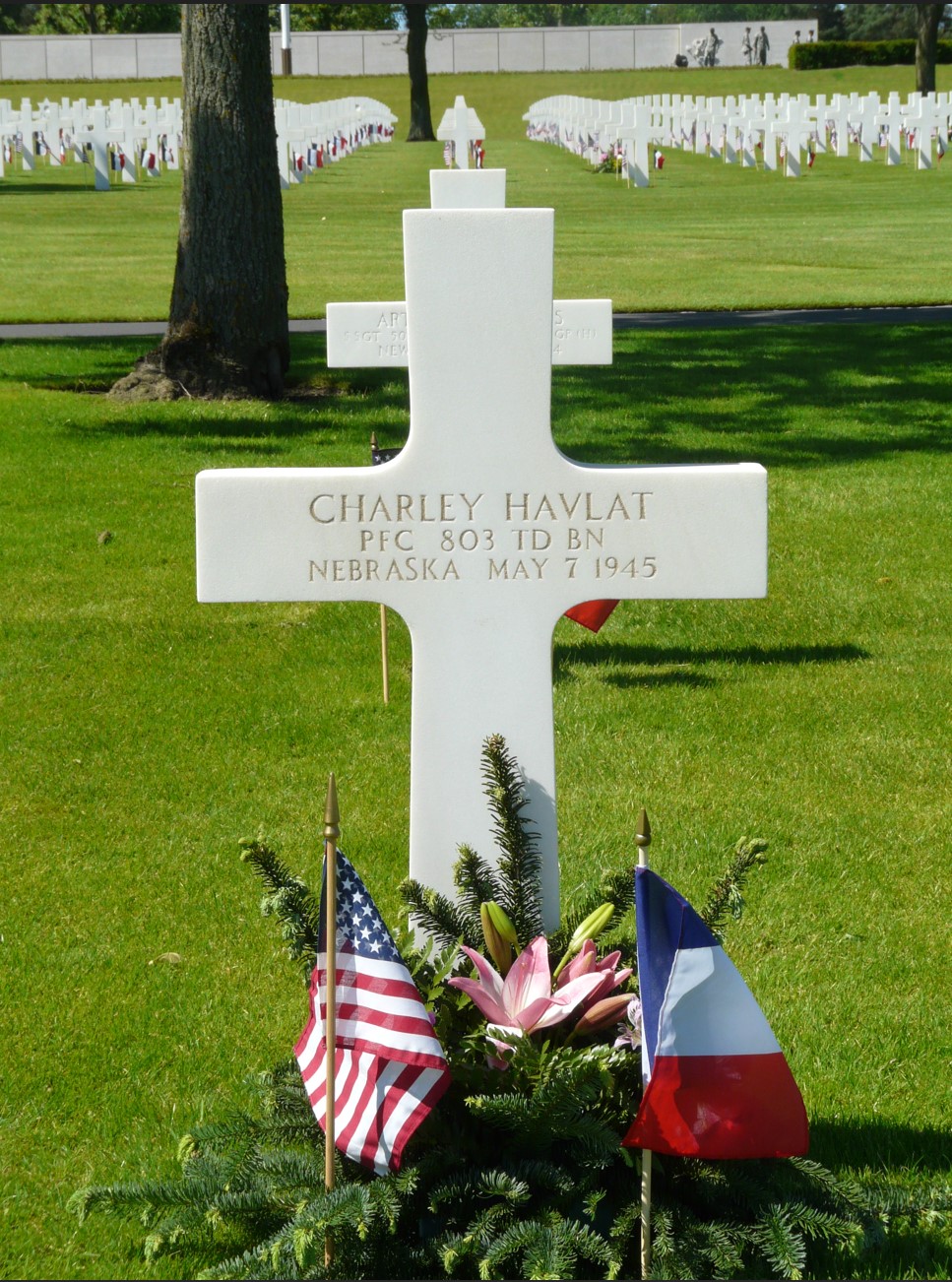
30 brothers buried side by side including a P-51 Mustang ace
Maj. George Preddy, the third-leading ace in the European Theater of Operations, is buried at Lorraine American Cemetery. A native of Greensboro, North Carolina, Preddy was an intelligent student with a natural athletic ability, though his smaller size limited some of his opportunities. To satisfy his competitive spirit, he focused on sports like basketball and tennis and even taught himself gymnastics. Known as a “great little scrapper,” he earned a reputation for his resilience and determination, never backing down from a challenge.
Preddy’s lifelong ambition was to become a pilot, a goal he pursued relentlessly. His interest in college was largely driven by the belief that it would help him achieve this dream. Before the war, he worked as a barnstormer, gaining flying experience that would prove invaluable later. Though he initially tried to become a Naval aviator, he was medically disqualified multiple times. Undeterred, Preddy continued his barnstorming career until he enlisted in the National Guard, hoping to transfer to a pilot program from within.
On Dec. 12, 1941—just days after the attack on Pearl Harbor—he was designated an Army Air Corps pilot. He was first assigned to the 9th Pursuit Squadron in Australia, where he flew the P-40 Kittyhawk against seasoned Japanese pilots. During this time, he was seriously injured in a mid-air collision. After recovering, he joined the 34th Squadron of the 352nd Fighter Group and recorded three victories while flying the P-47 Thunderbolt. The unit later transitioned to the P-51 Mustang, and Aug. 6, 1944, Preddy achieved one of the most significant feats of his career, shooting down six enemy planes during a bomber escort mission. For this, he was awarded the Distinguished Service Cross. His skill and bravery earned him multiple extensions to his European tour before he returned to the U.S. for home leave.
Tragically, his life came to an end on Christmas Day, 1944, while supporting the counteroffensive during the Battle of the Bulge. After shooting down two German fighters, he was struck by friendly fire while pursuing a third airplane. Despite efforts to save him, he was found dead from a single .50 caliber round.
Throughout his career, Preddy recorded 26.83 victories – including 23.83 in the P-51 Mustang, the most ever by a P-51 pilot. He received numerous awards, including the Distinguished Service Cross and the Silver Star with Oak Leaf Cluster. His younger brother, 1st Lt. William “Bill” R. Preddy, also a fighter pilot, was reported missing in action April 17, 1945, and declared killed in action later that year. The brothers are buried side by side at Lorraine American Cemetery, Plot A, Row 21, Graves 42 and 43.
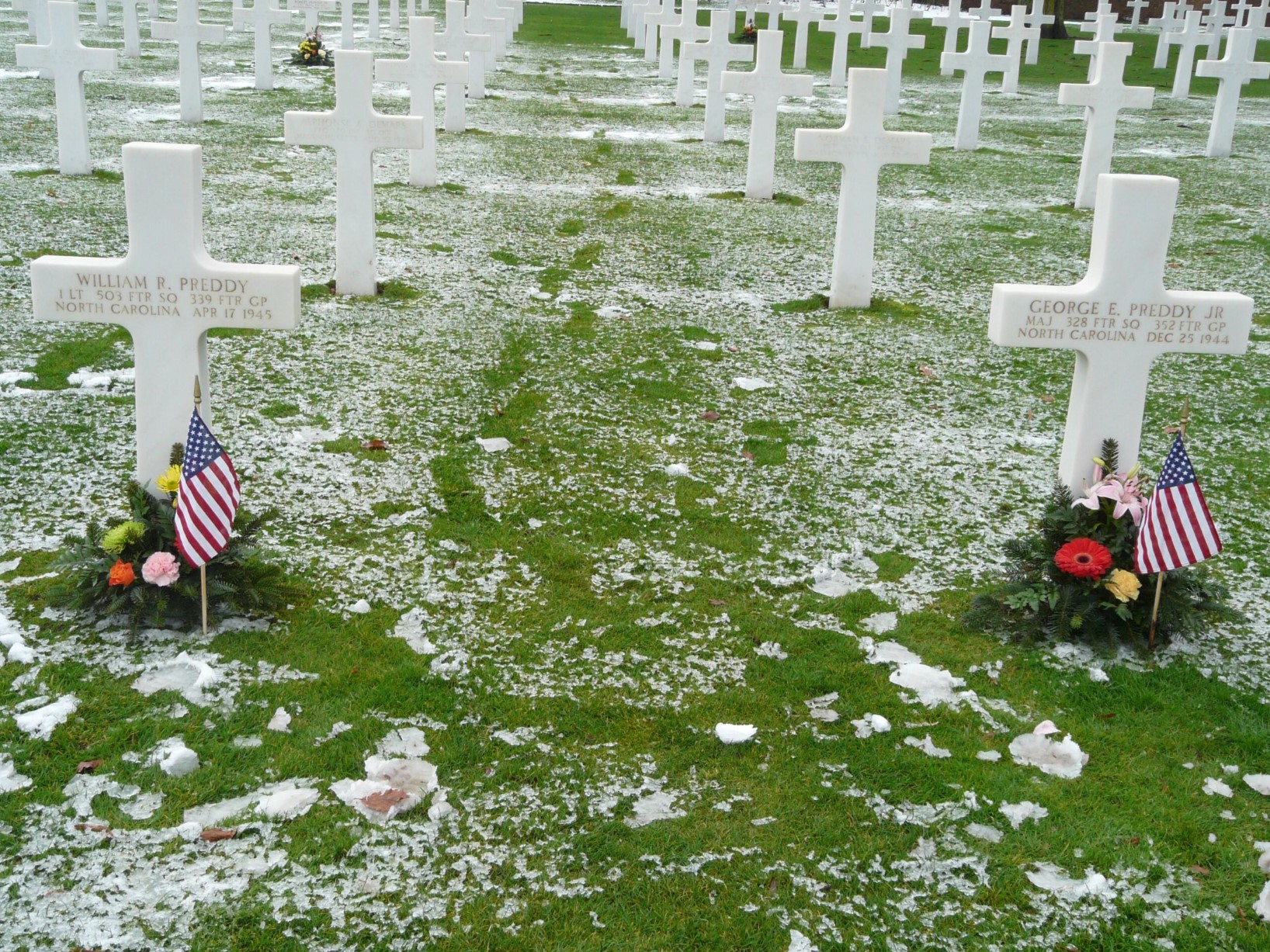
Service members who lost their lives in Portugal, Spain and Morocco
3 service members killed in Portugal
On Feb. 22, 1943, a Boeing 314A Clipper crashed off Lisbon, Portugal, killing 24 people, including American actress Tamara Drasin and novelist Ben Robertson. The aircraft, operated by Pan American Airways, was descending for a scheduled landing when its left wingtip struck the water after a turn. The plane, traveling at an altitude of around 600 feet, crashed into the river, remaining partially submerged for 10 minutes before sinking.
Despite the prompt rescue efforts, including assistance from both PanAm and British Overseas Airways Corporation, only seven of the 12 crew members and 10 of the 27 passengers survived.
Among the victims were U.S. Army Capt. Joshua H. Edelman, Maj. Burton C. Mossman Jr. and Maj. John N. Poto. They are buried at Lorraine American Cemetery, respectively Plot E, Row 6 Grave 7; Plot D, Row 9, Grave 5; and Plot K, Row 12, Grave 7.
480th Anti-Submarine Group stationed in Morocco
The 480th Anti-Submarine Group was activated June 21, 1943, in North Africa and assigned to the U.S. Army Air Forces Anti-Submarine Command. Stationed in Port Lyautey, Morocco, the group primarily conducted anti-submarine patrols across the Atlantic, protecting vital convoys and engaging enemy submarines. In July 1943, it played a significant role in the Battle of the Atlantic, helping to thwart enemy U-boats off Portugal, which was critical to the success of the Sicilian campaign. Later, the group expanded its mission to include air combat and the protection of convoys after Italy’s surrender. The group earned a Distinguished Unit Citation for its contributions before disbanding in January 1944.
First Lieutenant John L. Beckner was part of this division. He lost his life during a mission Aug. 28, 1943. He forever rests at Lorraine American Cemetery, Plot E, Row 9, Grave 36.
Loss from Operation Torch
Fireman 3rd Class in the U.S. Naval Reserve Raymond Edward Lee served aboard the USS Tasker H. Bliss (AP-42) during Operation Torch off the coast of Morocco. The USS Tasker H. Bliss was assigned to Task Group 34.9, Center Attack Group, and arrived off Fedhala, Morocco, Nov. 8, 1942. On the evening of Nov. 12, while anchored in Fedhala Roads, the ship was torpedoed by the German submarine U-130, which fired five torpedoes at three transports. Lee was reported missing in action after an attack Dec. 11, 1943, though some records suggest the incident occurred on Nov. 12.
Lee’s remains were originally buried Dec. 18, 1943, in the Chipiona Civil Cemetery of Chipiona, Spain. His remains were later disinterred by the American Graves Registration Service, positively identified, and reburied in the temporary cemetery at St. Avold, France. His widow, Imogene, from Gas City, Indiana, directed his final interment to be at Lorraine American Cemetery.
On Dec. 21, 1948, Raymond Edward Lee was permanently buried in Plot D, Row 6, Grave 7 at Lorraine American Cemetery in France.
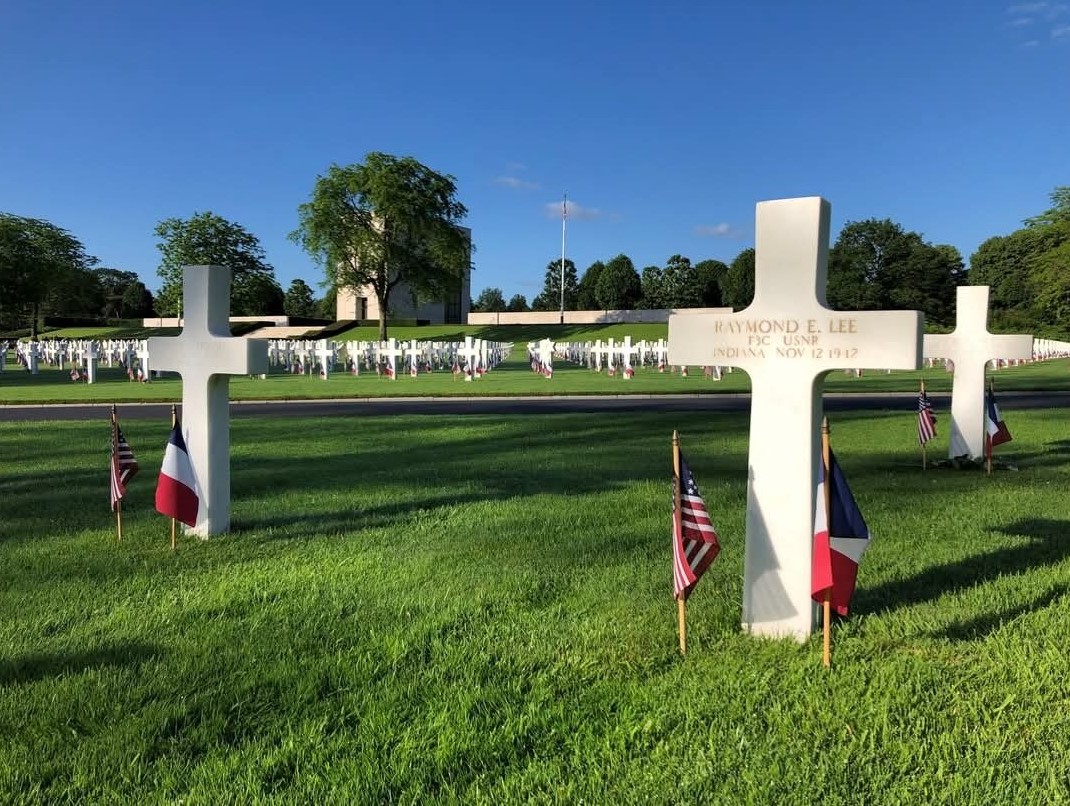
The protector of the city of St. Avold
The statue outside the memorial facing the burials is St. Nabor. St. Nabor is the saint protector of the city of St. Avold. The city was called St. Nabor in the Middle Ages.
At Lorraine American Cemetery, above the tall bronze doors of the memorial, the 26-foot-tall statue of St. Nabor is carved in Euville stone. An archangel with a trumpet stands above St. Avold. It extends blessings upon those laid to rest or mentioned on the Walls of the Missing. “St. Avold” is another spelling of “St. Nabor,” a Roman Christian soldier martyred in 303 A.D. during the reign of Emperor Maximian.
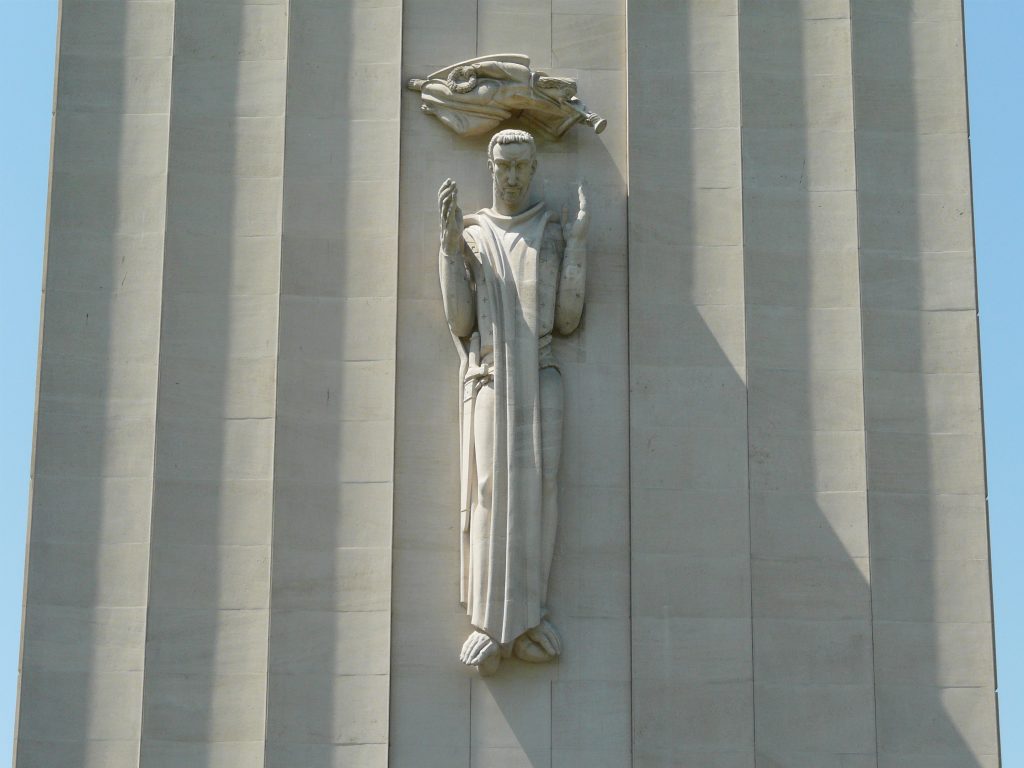
The American Battle Monuments Commission sites are a constant reminder of Gen. John J. Pershing’s promise that, “time will not dim the glory of their deeds.”
 An official website of the United States government. Here's how you know.
An official website of the United States government. Here's how you know. 